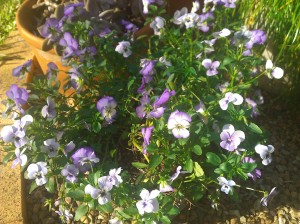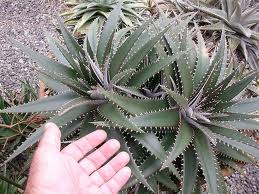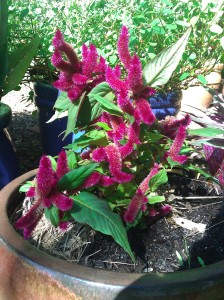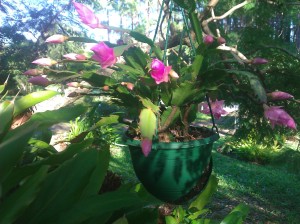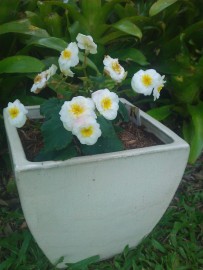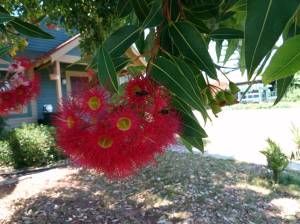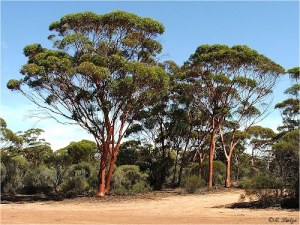A year ago I wrote here about the attractive traits of gardeners and their wonderful, curious way of viewing the world. They don’t just look at a landscape, and take in the trees, flowers and foliage. They touch, compare, smell and ruminate and can explain what family connection this bush has to others and what-goes-with-this-goes-with-that, kind of thing (like an old Sussan store jingle).
Take a gardener for a walk and she/he will stop, squat and poke their hands into the dirt, trace the veins of leaves and stroke tree limbs and trunks like they are prized children.
They hold the colourful back story of many plants at their fingertips, extrapolating a mere “red bush” into something of breathtaking origin, bizarre blooming or reproductive habit and fascinating medical use. And they nod sympathetically when something in your garden is failing to thrive; they offer treatment, ponder vexedly and actually fret when a remedy is not immediately apparent or doesn’t work.
It is not faux concern. It really matters to them.
One of the joys of belonging to my garden club is being with a clan of people who can rattle off the Latin and common name of hundreds of plants and lose hours debating the merits of this shade-loving ground cover over that one, talk loftily about PH levels and soil acidity, yet kindly praise the humblest and commonest coleus slip or choko, just because someone has tended and cut it proudly and brought it along. It’s a sweet and and loving adult show-and-tell that is not replicated many other places. They genuinely welcome and encourage newbies with no horticultural snobbery.
And this week, I basked in another lovely aspect of these gardeners.
They pay attention, remember – and follow through.
I only have to mention a cutting I’d love or a shrub or vine I’ve admired and by the next month’s get together – yes four weeks later – a member will have potted that very plant to give me. When so much of the world seems to have the attention span of a gnat, the thoughtfulness and trouble taken to hear, note, remember and act on what someone else might take as a casual fancy, is truly touching.
I’ve been the recent lucky recipient of both a white and a pink bauhinia, a petrea vine, a speckled aspidistra and a beaumontia that I had even forgotten I’d coveted. They were quietly
presented to me when I arrived at the meeting this week.
Another member whom I hardly knew, took the trouble to get my phone number from the president to offer me some worms to start my worm farm, after mine had all perished in the heat.
It’s not the gift per se that moves me on such occasions. It’s that they have me in mind and gone out of their way to share.
Sure, many people are thoughtful, kind and generous. But I believe there’s more of them among gardeners. It may come from a “living in the moment” that gardening demands and so a better mindfulness is at play.
That’s why last year, when I met a woman in her large, beautiful garden adjoining her café (where we had just spent a tidy sum) who wouldn’t allow me even one slip of a common ground cover chrysanthemum pacifica, I was flabbergasted.
The odd noxious weed is inevitable, I guess.
Two more valuable garden lessons this month: 1. cane straw mulch is a no-no.
I’ve been using it generously for ages and in our long dry spell, was pretty under impressed with its moisture retention properties. Its waxy surface seems to cause water to run off rather than penetrate and the sugar attract ants and earwigs – that have eaten my seedlings. It also has a wealth of bacteria, and toxic. Pesticide remnants go straight into the bed underneath and it draws nitrogen from the soil. I’m now using lucerne mulch which costs more but is way more nourishing. And have come across a hydromulch cubed product that is packed with microbial goodness to feed the garden and neat and easy to apply – comes in biscuit-like form to which you just add water. It’s a sideline of a large scale operation made for revegetating roadsides and agricultural land disturbed by mining operations.
Lesson 2: don’t kill all the caterpillars on my pot plants. Many of them are Monarch butterflies in the making.
Former Gatton olive grower and farmer Ray Archer has made a butterfly sanctuary at his Bribie Island backyard, cultivating butterfly-attracting plants there with the help of an army of volunteers. And he has urged me to leave the little black specks I’ve been wiping off my ervatamia (moonbeam plant) and dipladenia leaves, (Monarch butterfly eggs) and to turn a blind eye to a bit of chewed foliage, ( “it’s not much to ask, Ray insists) so the grubs can hatch, grow and turn into chrysalises and reach their beautiful destiny.
And I’ve planted milkweed – the Monarch’s favoured food. Not a pretty plant, but a necessary one if we want to keep butterfly populations healthy.
A sharing lesson for me.

















